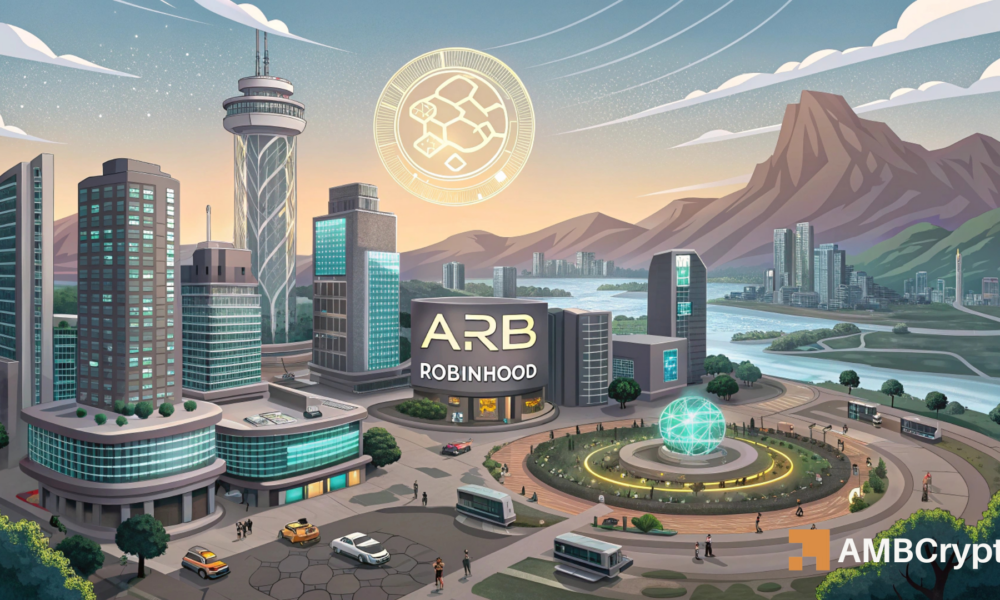The Current State of Arbitrum: Challenges and Promises Ahead
Arbitrum, a Layer 2 blockchain on the Ethereum mainnet, is experiencing a mixed short-term outlook despite its long-term growth potential. Recently, ARB prices have dropped, primarily due to a decline in on-chain activity over the last month. As the cryptocurrency market grapples with fluctuations, investors may be concerned about Arbitrum’s ability to maintain its momentum amidst these challenges. This article delves into the factors affecting Arbitrum’s performance and the potential upside stemming from Robinhood’s recent expansion into its ecosystem.
Short-Term Challenges for Arbitrum
The short-term performance of Arbitrum has been disappointing, marked by a noticeable decrease in on-chain activity. The Total Value Locked (TVL) in the Arbitrum network declined from $8.18 billion to $6.23 billion, representing a significant reduction during a period of market weakness. Recent statistics further illuminate the situation; active addresses plummeted from 1.02 million to 596,000, and transaction volume followed suit, dropping from 14.6 million to 8.55 million. This trend of diminishing activity understandably raises eyebrows among investors about the platform’s immediate prospects.
Robinhood’s Impact on Arbitrum
A significant turning point for Arbitrum may come with Robinhood’s expansion to the ARB chain, particularly in the realm of Real-World Assets (RWA) tokenization. Robinhood plans to increase its offerings of tokenized stocks on Arbitrum, potentially bringing approximately 23 million users into the ecosystem. This influx could boost both ARB prices and on-chain activity. As institutional involvement increases, the anticipation of enhanced user adoption may mitigate the bearish trends currently observed.
Market Reactions and Bullish Trends
While current charts for Arbitrum display bearish patterns, they also suggest the potential for a reversal. The consistent response from bullish investors at price dips indicates a demand zone that might underpin future price stability. Indicators like the Relative Strength Index (RSI) and Chaikin Money Flow (CMF) suggest that although capital outflows are evident, bullish divergences could pave the way for upward movement. Such technical patterns offer optimism for traders who may be looking for recovery points amid the current market weakness.
Future Prospects for Tokenized RWAs
Robinhood’s plans extend beyond mere token offerings; the company aims for full decentralized finance (DeFi) interoperability by 2026. This timeline presents an opportunity for both Arbitrum and Robinhood to leverage each other’s strengths, creating an attractive environment for users and investors alike. The TVL for tokenized RWAs on Arbitrum stands at $490 million, and with Robinhood’s integration, this figure is poised to increase significantly. As institutional liquidity floods into the platform, the market capitalization of tokenized RWAs on Arbitrum—currently at $1.026 billion—could see a substantial uptick.
Institutional Support and Long-Term Growth
Despite the current market weakness, the long-term outlook for Arbitrum remains encouraging, especially due to its institutional support. Robinhood’s involvement is a significant endorsement for the platform, providing both the credibility and the liquidity needed for growth. The synergy between Robinhood’s user base and the Arbitrum ecosystem may create a virtuous cycle of increased activity and investment, fostering a more robust market environment for ARB moving forward.
Conclusion
In summary, while Arbitrum faces short-term challenges characterized by declining on-chain activity and reduced prices, the underlying potential offered by Robinhood’s expansion presents a compelling case for optimism. As the market observes how these developments unfold, the prospect of enhanced adoption and increased activity on the ARB chain may very well position Arbitrum for a fruitful resurgence. Investors and users alike would benefit from keeping a close eye on this layer of the Ethereum network, as it continues to evolve and adapt in a rapidly changing landscape.


